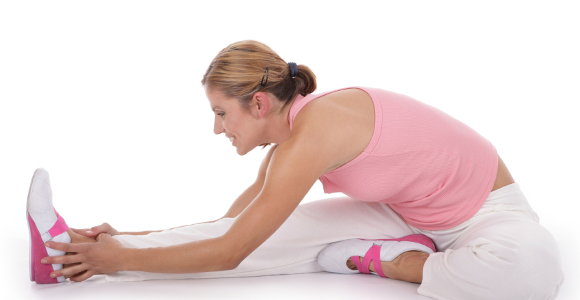
There is one exercises I do every day to help me manage my blood sugar levels. It’s simple to do and requires no huffing and puffing or heavy weights. You can do it where ever you are and it only takes a few minutes to complete.
You guessed it – Stretching. It keeps your joints and muscles flexible and allows for ease of movement . . . especially as we age.
It’s something we naturally do when we are moving – such as walking or running or swimming. This type of stretching is the minimum necessary to get us through the day. However, there are over 300 joints in our bodies and each one of us have 700 or more muscles, depending on our age, that are activated by our daily movements.
Now – I am not saying we should know and physically stretch everyone but there are major joints and muscles that we should stretch everyday if we are to live a fit life.
How does stretching help pre-diabetics?
Pre-diabetics can benefit from a daily prescription of a systematic stretching routine that will improve flexibility in all their major joints and muscles.
Flexibility and range of motion are issues many diabetics have to deal with on a daily basis. Lack of it can cause injuries due to poor balance . . . an early sign of neuropathy or nerve damage.
If you have ever pulled your hamstring muscles (at the back of your thighs) you know what it means to not be flexible. I have been guilty in the past and paid the price.
Elevated blood sugar affects our joints by causing them to lose flexibility and not move freely. By stretching each day, we will make it easier to flush excess sugar from them and improve mobility.
Being flexible will lead to better cardiovascular health because it helps to open the capillaries, or tiny blood vessels, that are blocked by excess glucose. This allows for improved blood flow which will give your joint and muscle cells better access to necessary nutrients for energy. Stretching once each day for ten to twenty minutes will do this for you.
Other benefits of stretching
One of the side effects of doing resistance exercises is delayed onset muscle soreness (DOMS). When you start working out for the first time, or after a long layoff, your muscles will be sore for the next two or three days. Stretching is one way to lessen this effect. Stretch the sore muscle – and joints related to those muscles – by holding your stretch for several seconds.
Tight and shorten muscles and joints becomes a problem as we age. To improve our flexibility and range of motion do a flexibility routine each day . . . and enjoy ease of movement and better posture.
It will improve your blood pressure since you will have better circulation and your heart doesn’t have to work as hard.
Stretching will give you relief from built up tension cause by stressors of the day. Ever have one of those days when nothing seems to go right? Your head hurts and your body is tense. This is the effect stress can have on you and practicing an effective stretching routine will bring needed relief – physically and mentally.
Want to walk with a steady gait – with little or no discomfort? Start a stretching today. It will improve your balance and help prevent injuries.
You will have faster recovery from lifting weights and doing stressful cardio exercises especially the kind I recommend . . . HIIT weight training.
Sitting at a desk for extended periods – hours at a time – can cause muscles and joints to shorten. Relieve the hunched-over feeling in your shoulders and back while developing better posture by doing targeted flexibility movements.
Want to sleep better at nights or whenever you are resting? Do stretches to help relax your neck and shoulders before going to bed.
OK – so what type of stretching should you do?
Types of stretching
There are two main types of stretching I do regularly – static stretch and dynamic stretch. Each form has its benefits but for our purposes, static is the better of the two.
Dynamic stretches call for faster movements that you would do before or during a cardio or resistance training session. Ever see an athlete warming up before a game or activity? They are doing dynamic stretches.
Static stretches on the other hand is slower with more deliberate movements. They are done by stretching the muscle or joint to the point of slight discomfort and maintaining that hold for 10 to 30 seconds.
Using resistance bands to assist with your stretching is an effective way to add tension to the stretching motion for even better results.
To help you take control of fluctuating blood sugar and prevent pre-diabetes I recommend starting a consistent flexibility program. It should target all the major areas of your body – from your head down to your toes.
If you find doing regular exercises – cardio or resistance workouts – too difficult for whatever reason – complications or injuries – then stretching is one form of movement that can be done from almost any position – standing, sitting or even in a prone position.
Complications can start in the early stages of diabetes. Be mindful of their signs and starting from where you are right now to begin stretching. Do my targeted stretches for ten minutes every day and I guarantee you will feel better.
